โบสถ์โรงเรียนเชียงใหม่คริสเตียน
โบสถ์โรงเรียนเชียงใหม่คริสเตียน
ที่ตั้ง เลขที่ 19 ถนนเชียงใหม่–ลำพูน ตำบลวัดเกต อำเภอเมือง จังหวัดเชียงใหม่
สถาปนิก/ผู้ออกแบบ ดร. มาเรียน เอ ซีค
ผู้ครอบครอง โรงเรียนเชียงใหม่คริสเตียน
ปีที่สร้าง พุทธศักราช 2433
ประวัติ
คริสต์ศาสนานิกายโปรแตสแตนท์คณะอเมริกันเพรสไบทีเรียนในแผ่นดินล้านนาได้เริ่มต้นเมื่อหมอดาเนียล แมคกิลวารี ได้เข้ามาเผยแพร่คริสต์ศาสนาควบคู่กับการนำวิทยาศาสตร์สมัยใหม่เข้ามาเผยแพร่ในเชียงใหม่ในรัชสมัยพระบาทสมเด็จ พระจอมเกล้าเจ้าอยู่หัว จึงทรงโปรดเกล้าฯ ให้มีพระราชกระแสรับสั่งไปตามหัวเมืองรายทางที่มิชชันนารีเดินทางผ่านเพื่ออำนวยความสะดวกและความปลอดภัย ภายหลังที่หมอดาเนียล แมคกิลวารี ได้ออกเดินทางเผยแพร่ศาสนาคริสต์อยู่ในแผ่นดินล้านนา การเติบโตของคริสตจักรจึงมีศูนย์กลางอยู่ที่เชียงใหม่ จากจุดเริ่มต้นนี้เองจึงเกิดปัญหาการขัดแย้งทางด้านศาสนา ความเชื่อ และอำนาจนิยม การไม่เปิดรับเสรีภาพทางศาสนาของเจ้ากาวิโลรส เจ้าผู้ครองนครเชียงใหม่ในขณะนั้น ที่ไม่ยอมให้คนในล้านนาหันไปนับถือคริสต์ศาสนา จึงนำมาซึ่งเหตุการณ์การประหารชีวิตหนานชัยและน้อยสุริยะที่ฝืนจารีตและขนบธรรมเนียมประเพณีดั้งเดิมไปนับถือศาสนาใหม่ ซึ่งสร้างความไม่พอใจแก่เจ้ากาวิโลรสเป็นอย่างมาก เหตุการณ์ในครั้งนั้นสร้างความหวาดวิตก แก่คริสต์ศาสนิกชนและคณะมิชชันนารี การดำเนินการเผยแพร่ศาสนาจึงเป็นไปอย่างยากลำบากและโดนขัดขวางในทุกรูปแบบจากผู้ปกครอง หมอดาเนียล แมคกิลวารี ได้นำปัญหานี้ปรึกษากับกงสุลใหญ่สหรัฐอเมริกา และได้นำความดังกล่าวขึ้นกราบบังคมทูลพระบาทสมเด็จพระจุลจอมเกล้าเจ้าอยู่หัวผ่านทางข้าหลวงใหญ่ และในเวลาต่อมาทรงได้มีพระบรมราชโองการ “เรื่องการถือศาสนา” ประกาศเมื่อวันที่ 8 ตุลาคม พุทธศักราช 2421 ที่มีใจความการอนุญาตให้ประชาชนนับถือศาสนาใดก็ได้อย่างเสรี จึงนับเป็นการให้เสรีภาพทางการนับถือศาสนาอย่างแท้จริง ภายหลังจากพระบรมราชโองการ “เรื่องการถือศาสนา” (Edict of Toleration) เป็นผลทำให้มิชชันนารีได้ขยายงานออกไปอย่างกว้างขวาง
กระทั่งมีคริสต์เตียนผู้เลื่อมใส คือ หนานนันทา ได้ยกที่ดินมรดกให้เพื่อสร้างโบสถ์คริสตจักรเชียงใหม่บริเวณริมฝั่งแม่น้ำปิงทางทิศตะวันออก โดยมี ดร.มาเรียน เอ ซีค มิชชันนารีชาวอเมริกันซึ่งทำงานอยู่กับหมอดาเนียล แมคกิลวารี เป็นผู้ออกแบบและก่อสร้าง ใช้งบประมาณในการก่อสร้าง 7,000 เหรียญสหรัฐ และคนท้องถิ่นสมทบอีก 1,800 บาท หลังจากที่สร้างโบสถ์ แล้วเสร็จ ได้ทำพิธีฉลองในวันที่ 9 สิงหาคม พุทธศักราช 2434มีพิธีนมัสการมอบถวายพระวิหารของพระเจ้า โดยมีหมอดาเนียล แมคกิลวารี เป็นผู้เทศนา และ ดร.วิลเลียมคลิ๊ฟตัน ดอด์ เป็นผู้อธิษฐานมอบถวายโบสถ์แด่องค์พระผู้เป็นเจ้า โบสถ์แห่งนี้จึงนับเป็นประจักษ์พยานแห่งเสรีภาพในการนับถือศาสนาในแผ่นดินล้านนา ต่อมาในพุทธศักราช 2511 เมื่อศาสนาคริสต์นิกายโปรแตสแตนท์ในจังหวัดเชียงใหม่ได้แพร่ขยายจนเป็นที่ยอมรับโดยทั่วไป และมีผู้นับถือจำนวนเพิ่มมากขึ้น จึงทำให้โบสถ์คับแคบคณะธรรมกิจคริสต์จักร์ที่ 1 เชียงใหม่จึงได้หารือกันและสร้างโบสถ์หลังใหม่ขึ้น ณ เลขที่ 10 ถนนเจริญราษฎร์ตำบลวัดเกต อำเภอเมือง จังหวัดเชียงใหม่ เพื่อรองรับการประกอบศาสนกิจและจำนวนสมาชิกที่เพิ่มมากขึ้นโบสถ์คริสตจักรหลังนี้จึงถูกเลิกใช้ไป และได้โอนกรรมสิทธิ์ในการครอบครองให้แก่ “โรงเรียนเชียงใหม่คริสเตียน”โดยให้ใช้เป็นสถานที่อบรมคริสต์จริยธรรมแก่นักเรียนและเป็นสัญลักษณ์ของโรงเรียนมาจนถึงปัจจุบัน
โบสถ์โรงเรียนเชียงใหม่คริสเตียนเป็นสถาปัตยกรรมยุโรปแห่งแรกในจังหวัดเชียงใหม่ สร้างด้วย “ไม้สักทอง” ทั้งหลัง โดยมีการผสมผสานเข้ากับรูปแบบการจัดวางผังวิหารหลวงทางพุทธศาสนาแบบล้านนาคือ มีการย่อหน้ามุข หน้า 3 หลัง 2 มีหอระฆังสูงต่อขึ้นไปเหนือมุขด้านหน้า เพื่อใช้ในการประกอบพิธีทางศาสนาด้านหลังมีห้องรับรอง 2 ห้อง หลังคามุงด้วยกระเบื้องลอน บานประตูหน้าต่างลูกฟักไม้ ซ้อนด้วยบานกระจก 2 ชั้น แบบเลื่อนขึ้น–ลง มีเสาหลวงรับน้ำหนักคู่กลาง 4 คู่ ผนังด้านนอกตีแบบไม้ซ้อนเกล็ดทั้งหลัง ฝ้าเพดาน มีช่องไม้ระแนงทำเป็นรูปตารางเพื่อระบายความร้อน ห้องโถงกลางตำแหน่งผู้เทศนามีพื้นไม้ยกระดับขึ้นมา 2 ชั้นชั้นละ 20 เซนติเมตร หน้าต่างหอระฆังเป็นแบบบานกระทุ้งไม้ทั้ง 4 ด้าน เหนือหอระฆังมีไม้กางเขนสีขาวประดับอยู่ บ่งบอกความเป็นศาสนสถานของคริสเตียน ใต้หอระฆังมีโถงเล็กด้านหน้าเป็นประตูใหญ่มีบันไดทางขึ้น3 ด้าน โบสถ์โรงเรียนเชียงใหม่คริสเตียนเป็นอาคารต้นแบบในการสร้างสรรค์สถาปัตยกรรมโบสถ์คริสต์ในภาคเหนือและชุมชนอันห่างไกลในแผ่นดินล้านนา โดยตลอดระยะเวลาที่ผ่านมาได้รับการดูแลรักษาให้อยู่ในสภาพดี สามารถรักษาคุณค่าทางประวัติศาสตร์และทางสถาปัตยกรรมเอาไว้ได้อย่างน่าชื่นชม
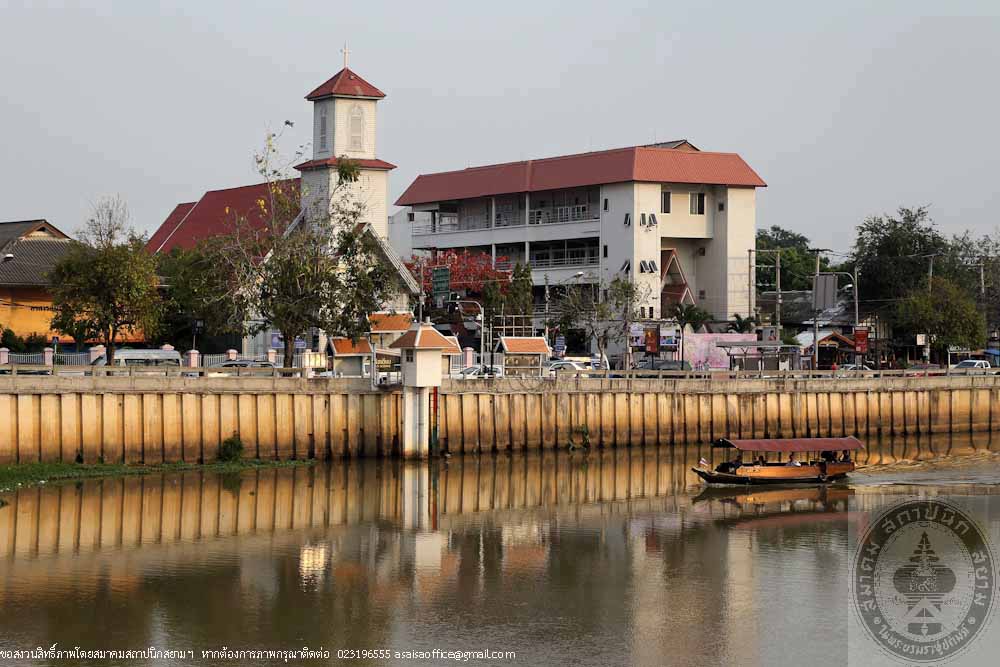
โบสถ์โรงเรียนเชียงใหม่คริสเตียน
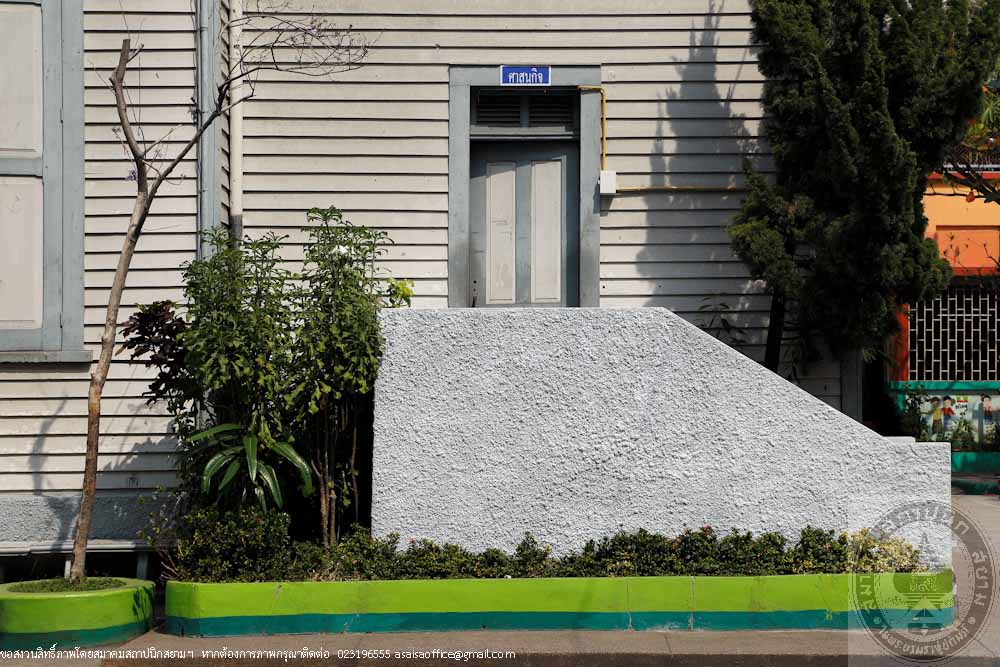
โบสถ์โรงเรียนเชียงใหม่คริสเตียน
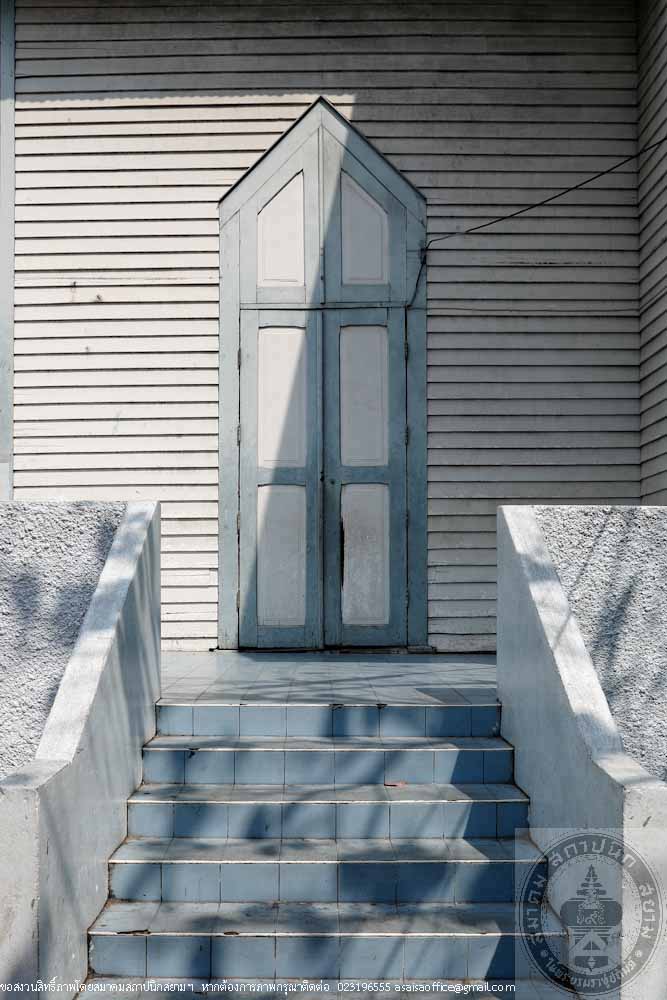
โบสถ์โรงเรียนเชียงใหม่คริสเตียน
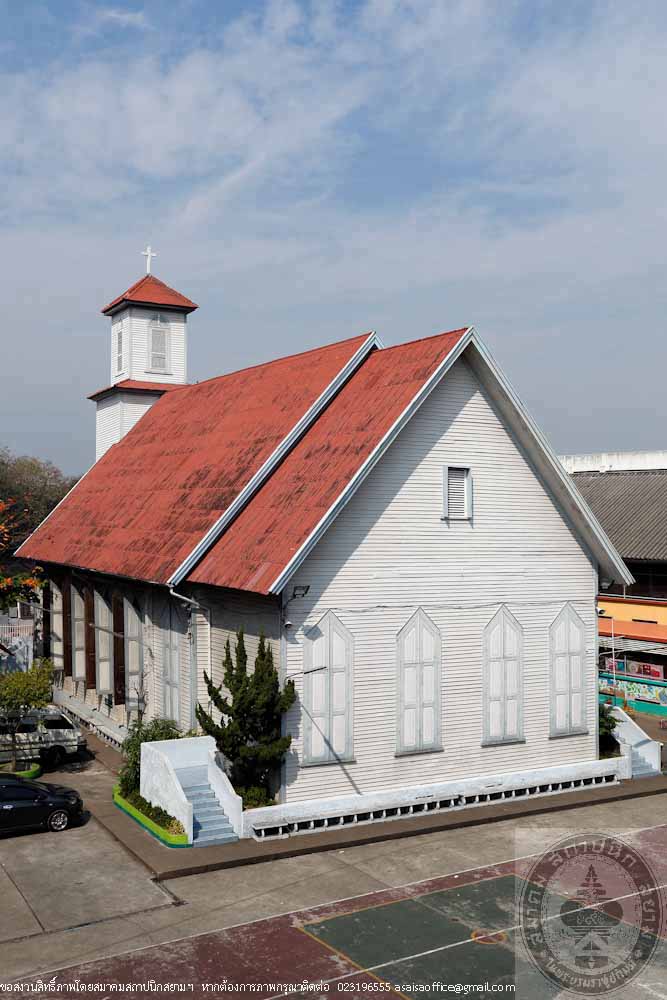
โบสถ์โรงเรียนเชียงใหม่คริสเตียน
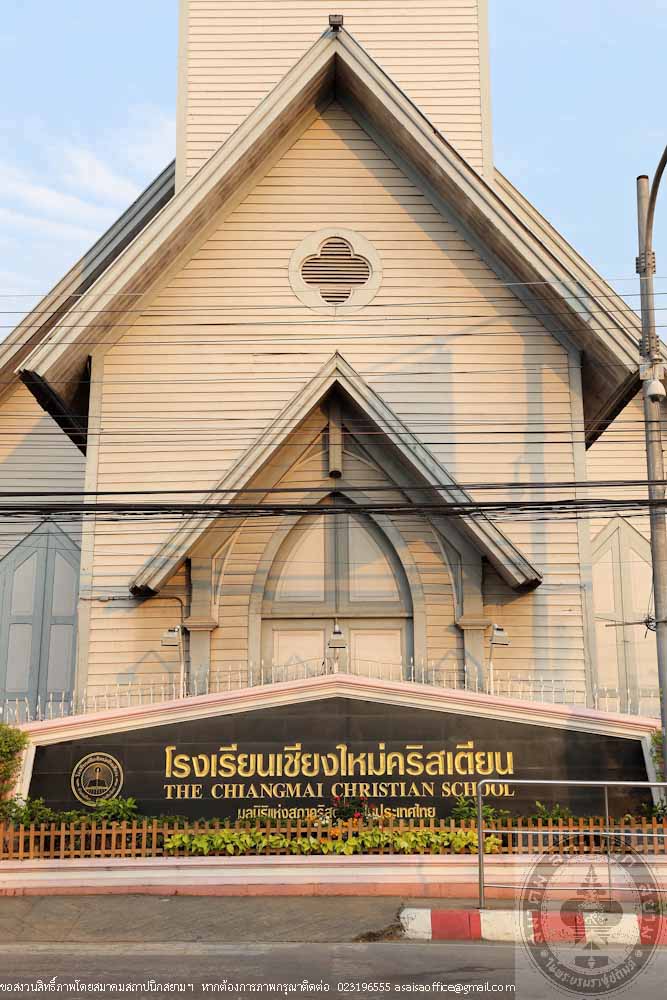
โบสถ์โรงเรียนเชียงใหม่คริสเตียน
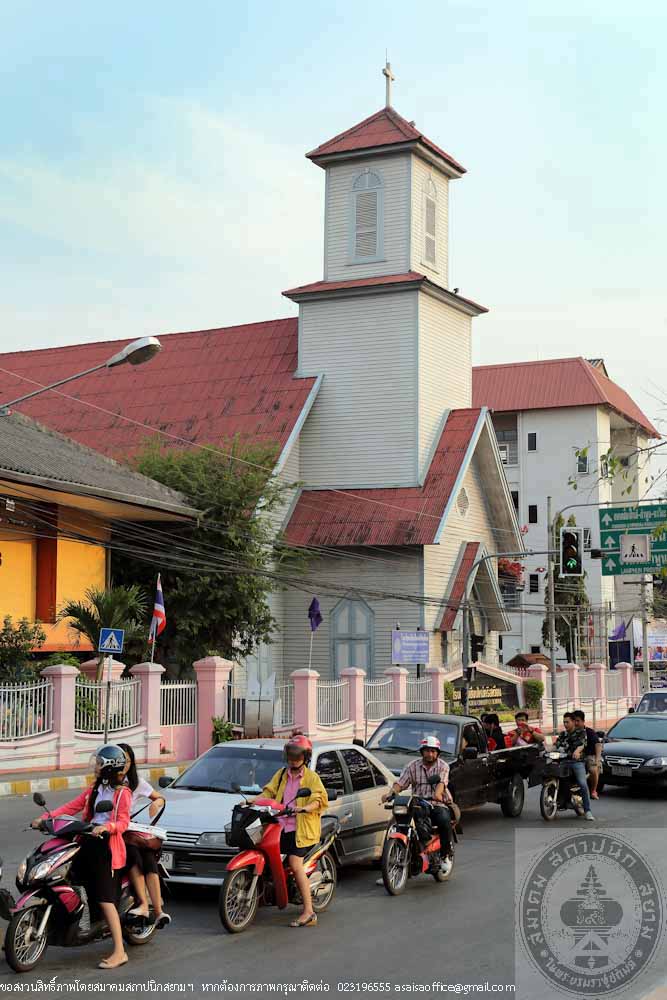
โบสถ์โรงเรียนเชียงใหม่คริสเตียน
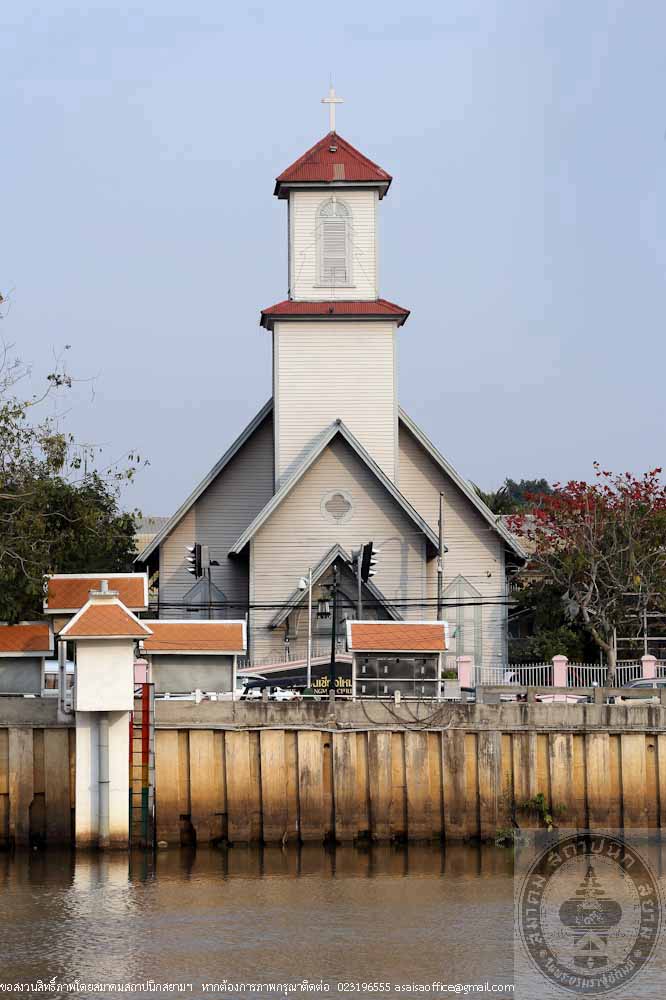
โบสถ์โรงเรียนเชียงใหม่คริสเตียน
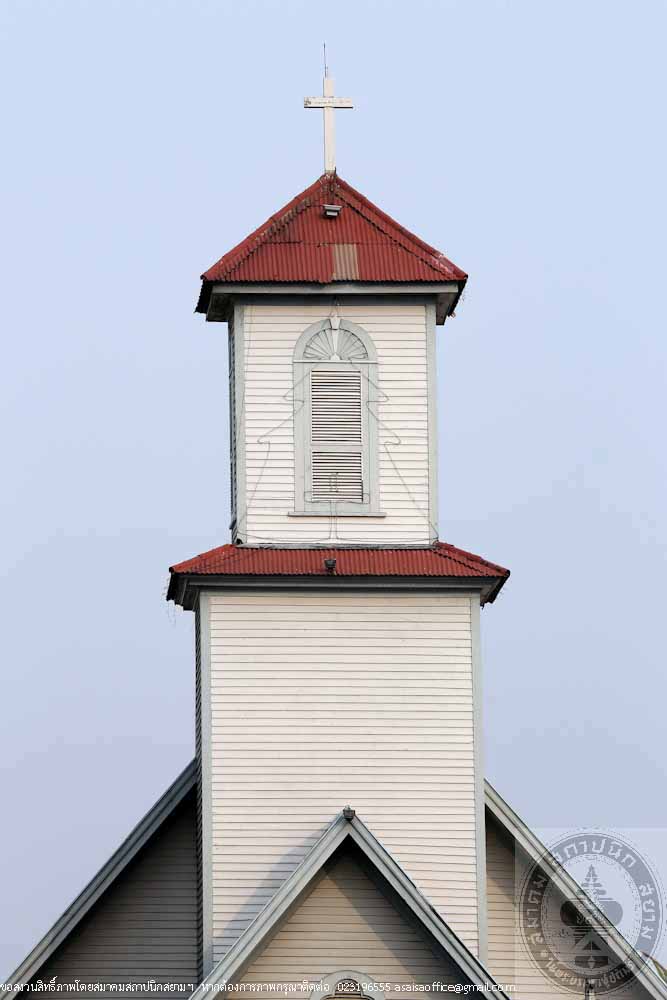
โบสถ์โรงเรียนเชียงใหม่คริสเตียน
-

โบสถ์โรงเรียนเชียงใหม่คริสเตียน
-

โบสถ์โรงเรียนเชียงใหม่คริสเตียน
-

โบสถ์โรงเรียนเชียงใหม่คริสเตียน
-

โบสถ์โรงเรียนเชียงใหม่คริสเตียน
-

โบสถ์โรงเรียนเชียงใหม่คริสเตียน
-

โบสถ์โรงเรียนเชียงใหม่คริสเตียน
-

โบสถ์โรงเรียนเชียงใหม่คริสเตียน
-

โบสถ์โรงเรียนเชียงใหม่คริสเตียน
The Church at Chiangmai Christian College
Location: 19 Chiangmai-Lamphun Road, Tambon Wat Ket, Amphoe Mueang Chiang Mai
Architect/Designer: Dr. Marion A. Cheek
Owner: Chiangmai Christian College
Year Built 1890
History
The Presbyterian Christian, a United States Protestant, began its passage in the Kingdom of Lanna through the work of Dr. Danial McGilvary, an American physician who brought Christianity along with modern science into Chiangmai during the reign of King Rama IV. The King issued a royal command for each provinces along the mission’s route to accommodate and provide safety to the missionaries. During the time when Dr. McGilvary traveled and preached Christian faith in the Kingdom of Lanna, Chiangmai became the center of the Christianity growth and therefore caused conflicts over religious beliefs and authoritarian. Chao Kawilorot, King of Chiangmai, denied freedom of religions and forbade the local from converting to Christianity which led to the execution of Nan Chai and Noi Suriya who violated their original traditions and customs and converted to the new religion, which displeased Chao Kawilorot. The incident worried the Christians and the missionaries, causing hardship in the spreading of the religion as it was suppressed in all form by the authority. Dr. Daniel McGilvary discussed the problem with the Consul General of the United States of America who reported it to King Rama V through a high commissioner. The King later issued an edict of “Religious Toleration” on October 7th, 1878 allowing the people to embrace any religions of their own choices and was regarded as a genuine right to religious freedom in the Kingdom. The Issuance of the Edict of Religious Toleration allowed the missionaries’ work to expand widely.
Shortly after, Norn Nanta, a devoted Christian, donated his inherited property to build Chiangmai’s Church of Christ on the eastern bank of Ping River. The church was designed and constructed by Dr. Marion A Cheek, an American missionary who worked for Dr. Danial McGilvary. After the construction of the church is completed, an opening ceremony was held on August 9th, 1891 whereas the consecration ceremony of the Cathedral Church of God was conducted by Dr. Daniel McGilvary with Dr. William Clifton Dodd performing the solemn rite of consecration. Thus, this church is regarded as the eyewitness of religious freedom in the Kingdom of Lanna. In 1968, when protestant Christian spread and was accepted throughout Chiangmai resulting in an increasing number of followers, the church became too small. Dhammakij Church 1 of Chiangmai then agreed to build a new chapel at 10 Charoenrat Road, Tambon Wat Ket, Muang Chiangmai to house religious ceremonies and support the rapid growth of their members. The First Church therefore fell into disuse and the property ownership was transferred to “Chiang Mai Christian College.” The site was dedicated to the study of the Christian Ethics for the students and has become the symbol of the school up until these days. The Church of Chiangmai Christian College was the first European architecture in Chiangmai, built entirely of “golden teak” with integrated layout designs of Lanna style Buddhist chapel such as the three-tiered roof in the front and two in the back and the bell tower above the front roof which was used in religious ceremonies while the back of the building consists of two recreational rooms. Carved roofing, mullion windows and doors with double glass shutters sliding up and down, 4 pairs of center supporting columns, horizontally overlapped wood siding on exterior walls and wood slat ceiling to add ventilation. The pulpit consists of two layers of raised wooden platforms each at 20 centimeter high. The bell tower has awning windows on all four sides with a white cross indicating the church of Christ. Under the bell tower is a small lobby with a large front door with stairways on 3 sides of the building. The Church of Chiangmai Christian College is a prototype of Christian church architecture in the north as well as other remote areas in the Kingdom of Lanna. Throughout the years, the church has been well maintained and is in good condition giving it praiseworthy capability to preserve its own historical and architectural values.